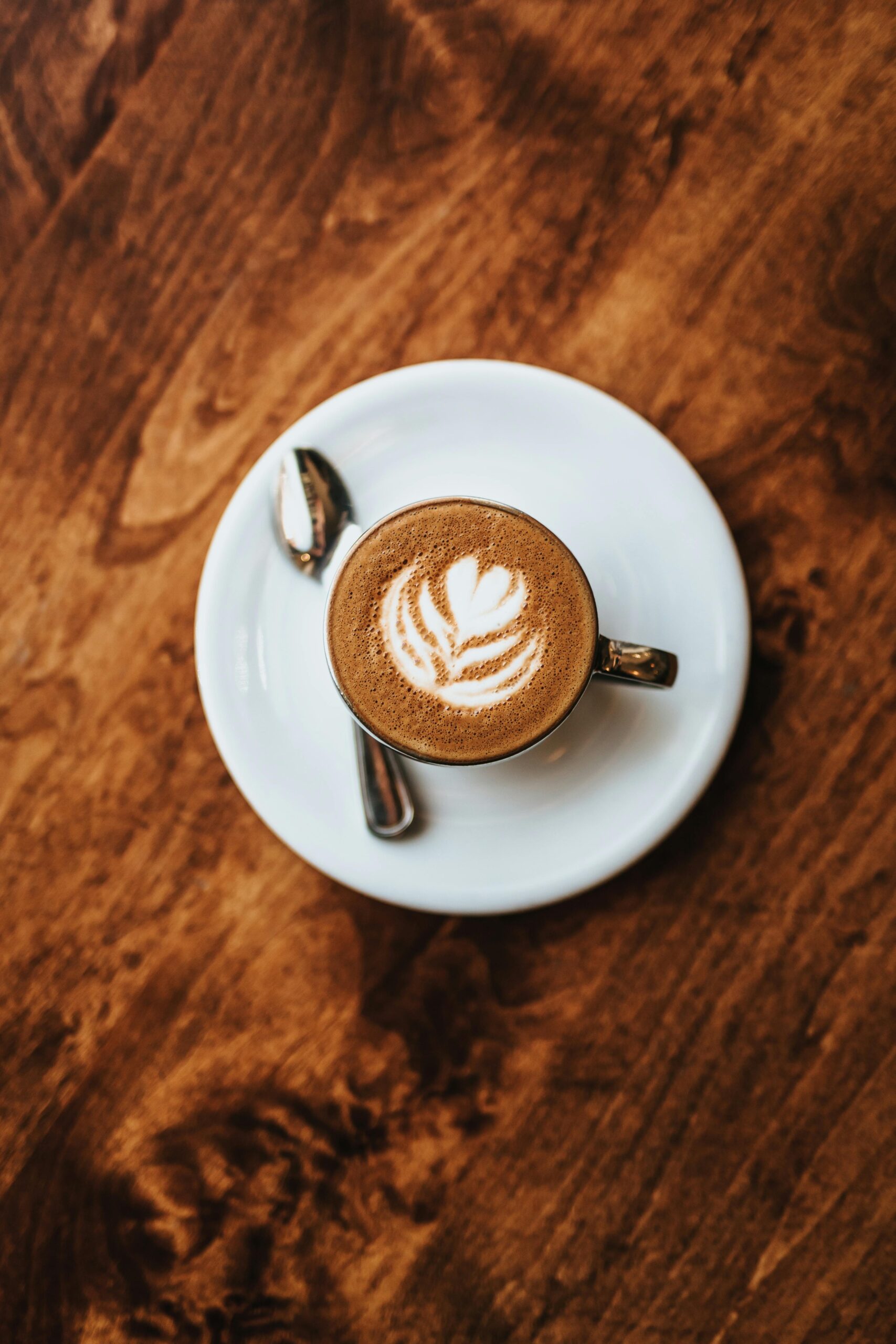Every coffee enthusiast knows that a great cup of coffee begins with quality beans. Yet, even the finest, most ethically sourced beans can fall flat if one crucial step is overlooked: the grind. The size of your coffee grind is not just a minor detail; it’s a fundamental variable that profoundly impacts the flavor, aroma, and overall extraction of your brew. It’s a precise science that dictates how water interacts with coffee, unlocking its potential or, if done incorrectly, leaving you with a less-than-ideal cup.
Imagine meticulously selecting a single-origin coffee with tasting notes of wild berries and chocolate, only for your final brew to taste watery and sour, or excessively bitter. The culprit, more often than not, is an inappropriate grind size. Achieving the perfect grind is a delicate balancing act, influencing everything from brewing time to the release of desirable compounds. It’s the silent orchestrator of your coffee’s final profile, transforming potential into palpable flavor. Understanding this intricate relationship is key to elevating your home brewing.
This article delves into the science behind the grind, dissecting how bean size affects your cup. We’ll explore the principles of extraction, explain the characteristics of different grind sizes, and reveal how to match the grind to your brewing method for optimal results. Prepare to unlock a new level of precision in your coffee preparation, ensuring every cup is a testament to mindful brewing and delicious flavor.
The Core Concept: Coffee Extraction
To understand why grind size matters, it’s essential to grasp the concept of coffee extraction. This is the process where hot water dissolves and pulls flavor compounds from the ground coffee. It’s a delicate balance; too little extraction (under-extraction) leads to undesirable flavors, and too much (over-extraction) also results in an unpleasant taste.
What’s Being Extracted?
Coffee contains hundreds of soluble compounds that contribute to its flavor:
- Acids: Contribute to brightness and vibrancy. (Extracted early)
- Sugars: Provide sweetness and body. (Extracted in the middle)
- Bitter Compounds: Contribute to intensity and balance, but can dominate if over-extracted. (Extracted later)
The Ideal Window
The goal is to achieve optimal extraction, meaning you dissolve the right amount of these compounds in the right balance. This typically falls within a range of 18% to 22% of the coffee grounds’ mass being dissolved into the water. Outside this window, flavors become imbalanced.
Grind Size and Its Direct Impact
Grind size directly influences the surface area of the coffee that comes into contact with water, which in turn dictates the rate of extraction and the resistance to water flow.
1. Surface Area
- Finer Grind = More Surface Area: Imagine crushing a rock. Crushing it into sand dramatically increases the total surface area exposed. Similarly, finer coffee grounds present more surface area for water to interact with.
- Coarser Grind = Less Surface Area: Larger particles have less surface area for the same mass, meaning water interacts with them more slowly.
2. Rate of Extraction
- More Surface Area = Faster Extraction: With more surface area, water can dissolve compounds more quickly.
- Less Surface Area = Slower Extraction: Compounds dissolve at a slower rate from larger particles.
3. Resistance to Water Flow
- Finer Grind = More Resistance: Fine particles pack more tightly, creating less space for water to pass through. This increases the resistance, slowing down the water flow.
- Coarser Grind = Less Resistance: Larger particles leave more gaps, allowing water to pass through quickly with less resistance.
The Balancing Act
An appropriate grind size ensures that the water has enough time to dissolve the desirable flavor compounds without dissolving too many bitter ones, all while allowing the water to pass through the coffee bed at the correct rate for your chosen brewing method.
Understanding Grind Consistency
Beyond just size, grind consistency is paramount. This refers to how uniform the size of all the ground particles are.
Why Consistency Matters
- Uneven Extraction: If your grind is inconsistent (a mix of fine dust and large chunks), you’ll get uneven extraction. The fine particles will over-extract rapidly, leading to bitterness and astringency. The large chunks will under-extract, leading to sourness and weakness.
- Channelling: In espresso or pour-over, inconsistent grinds can lead to “channelling,” where water finds paths of least resistance through the coarser parts of the coffee bed, leaving other areas under-extracted.
- Ideal Brew: A consistent grind ensures that all coffee particles extract at roughly the same rate, leading to a balanced, delicious, and predictable cup.
The Role of Your Grinder
- Burr Grinders (Recommended): These grinders use two abrasive surfaces (burrs) to crush coffee beans uniformly, producing a consistent grind size. They are an essential investment for quality coffee.
- Blade Grinders (Avoid): These “chop” coffee with spinning blades, similar to a blender. They produce a highly inconsistent grind with a lot of “fines” (coffee dust) and large chunks, leading to poor extraction and unbalanced flavors.
Matching Grind Size to Brewing Method
Different brewing methods require different grind sizes due to varying contact times between water and coffee, and different filter types.
1. Coarse Grind (Salt-Like)
- Appearance: Distinct, chunky particles, resembling sea salt or coarse sand.
- Brewing Methods:
- French Press: Requires a coarse grind because of its long immersion time (4-6 minutes) and mesh filter. Too fine, and you’ll get a muddy, over-extracted, and bitter cup with excessive sediment.
- Cold Brew: Very long immersion time (12-24 hours) necessitates a very coarse grind to prevent over-extraction and excessive bitterness.
- Reasoning: The long contact time requires larger particles to prevent over-extraction. The coarse grind also allows for easy separation from the brewed coffee without clogging filters.
2. Medium-Coarse Grind (Rough Sand)
- Appearance: Particles resembling rough sand, similar to beach sand.
- Brewing Methods:
- Chemex: The thick paper filter of a Chemex can handle a slightly finer grind than French Press, but still coarser than drip. The slow draw-down benefits from this size.
- Café Solo: Another immersion brewer that benefits from a medium-coarse grind.
- Reasoning: Provides a balanced extraction for methods with slightly shorter immersion or slower filtration than French Press.
3. Medium Grind (Table Salt/Regular Sand)
- Appearance: Resembles regular table salt or fine sand. This is often the most common “universal” setting.
- Brewing Methods:
- Automatic Drip Coffee Makers: Most standard drip brewers are designed for a medium grind.
- Siphon Coffee Maker: The vacuum brewing method works well with a medium grind.
- Reasoning: Offers a balanced extraction rate for methods where water passes through the coffee bed within a few minutes, not too fast or too slow.
4. Medium-Fine Grind (Fine Sand/Sugar)
- Appearance: Finer than table salt, resembling fine sand or granulated sugar.
- Brewing Methods:
- Pour Over (Hario V60, Kalita Wave): These methods, especially when using thin paper filters, often require a medium-fine grind to achieve optimal extraction within their shorter brew times (2-4 minutes). Precision is key here.
- Aeropress (Standard Method): Many AeroPress recipes use a medium-fine grind due to its relatively short immersion and pressurized extraction.
- Reasoning: Provides sufficient resistance and surface area for shorter contact times common in pour-over methods, allowing for clarity and nuance.
5. Fine Grind (Espresso Fine/Powdered Sugar)
- Appearance: Very fine, resembling powdered sugar or flour. When rubbed between fingers, it feels like a fine powder.
- Brewing Methods:
- Espresso Machine: Requires a very fine grind due to the very short contact time (25-30 seconds) and high pressure. The fine grind provides the necessary resistance to extract efficiently under pressure.
- Moka Pot: While not as fine as espresso, it requires a fine grind (finer than drip, coarser than true espresso) to create sufficient pressure for extraction.
- Turkish Coffee: The absolute finest grind, almost like flour, as the coffee is boiled directly with water and consumed with the grounds.
- Reasoning: The extremely short brew time and/or high pressure necessitates maximum surface area for rapid, efficient extraction.
Troubleshooting Your Grind: Taste as Your Guide
Your palate is the ultimate tool for dialing in the perfect grind size. Pay attention to how your coffee tastes, and adjust accordingly.
If Your Coffee Tastes Sour, Weak, or Under-extracted:
- Problem: Not enough flavor compounds were dissolved. The water passed through too quickly.
- Solution: Grind finer. This increases surface area and resistance, slowing down extraction and dissolving more compounds.
If Your Coffee Tastes Bitter, Astringent, or Over-extracted:
- Problem: Too many bitter compounds were dissolved. The water had too much contact time with the coffee.
- Solution: Grind coarser. This decreases surface area and resistance, speeding up extraction and dissolving fewer compounds.
Consistency is Key for Adjustments
When making adjustments, change only one variable at a time (e.g., just grind size, keeping dose and water temperature constant). Make small adjustments and taste the results. Remember that even a slight change in grind can have a significant impact.
Tips for Mastering Your Grind
- Invest in a Quality Burr Grinder: This is the single most important piece of equipment for consistent grind size. It’s a non-negotiable for serious home brewers.
- Grind Just Before Brewing: Coffee begins to lose its aroma and flavor rapidly after grinding due to oxidation. Grind only the amount you need, just moments before you brew.
- Store Whole Beans Properly: Keep your whole beans in an airtight, opaque container away from heat, light, and moisture to preserve their freshness.
- Clean Your Grinder Regularly: Old coffee oils and residues can build up in your grinder, impacting flavor. Follow your grinder’s cleaning instructions.
- Use Filtered Water: Water quality significantly affects taste. Use filtered water for brewing.
- Practice and Experiment: Don’t be afraid to experiment. Every coffee bean, every grinder, and every brewing setup is slightly different. Practice will help you develop an intuitive feel for the right grind.
The Unsung Hero: Precision in Every Particle
The science behind the grind reveals a crucial truth: bean size is not an arbitrary choice, but a precise variable that unlocks or locks away your coffee’s full potential. It’s the silent conductor orchestrating the delicate dance of extraction, influencing everything from vibrant acidity to rich body. Understanding how grind size affects surface area, extraction rate, and water flow empowers you to take direct control over your coffee’s flavor profile.
By meticulously matching your grind to your brewing method and diligently seeking consistency, you transform your daily coffee ritual into an act of precision and discernment. So, the next time you prepare your brew, take a moment to appreciate the unsung hero of your cup: the humble grind, a testament to how small details can lead to remarkably delicious results.

